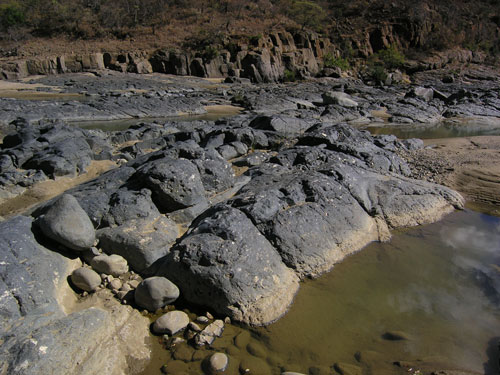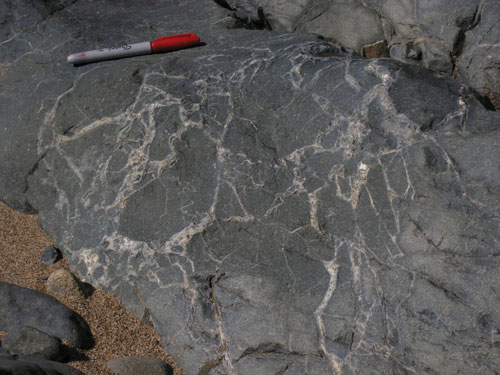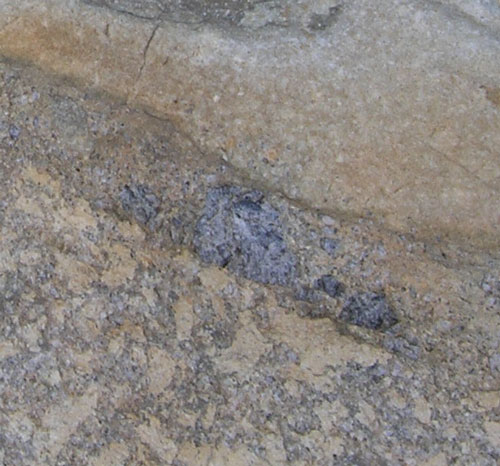Here are a few snaps from my sampling trip. I didn’t take many, because the light wasn’t great for photography, and also because my camera was also being a little bit badly behaved.

A view of the river I was working in, from the camp I was staying in.

The basalts I was sampling. They really are amazingly preserved, considering that they’re almost three billion – you can pick out individual flows, and a lot of them seem to have pillow-like textures. The white specks are amygdales – holes left by bubbles of gas which could not escape before the lava solidified, and were later filled in by minerals deposited from circulating hydrothermal fluids – generally quartz in this case.

The brecciated top of a lava flow, again perfectly preserved.

The contact between the basement granites of the Kaapvaal craton (the coarse grained unit) and the basal quartzite of the cratonic cover sequence (the much finer rock with planar striations). The contact itself is interesting – a later, finer grained granite has been intruded along the contact, which accounts for its deformed and melted look. How can we tell? Because within the fine granite you find these large, angular purple quartz clasts (image below enlarges a region on the right of the image above)

These clasts are found in distict layers within the quartzite:

Therefore, the only way that the can be incorporated into the fine contact granite is if it is a later intrusion which partially melted the quartzite.
Those eager for more, as a glutton for punishment I’m off to Namibia for three weeks at the weekend, which (if my camera behaves) should produce some nice shots.



Nice plan for content warnings on Mastodon and the Fediverse. Now you need a Mastodon/Fediverse button on this blog.